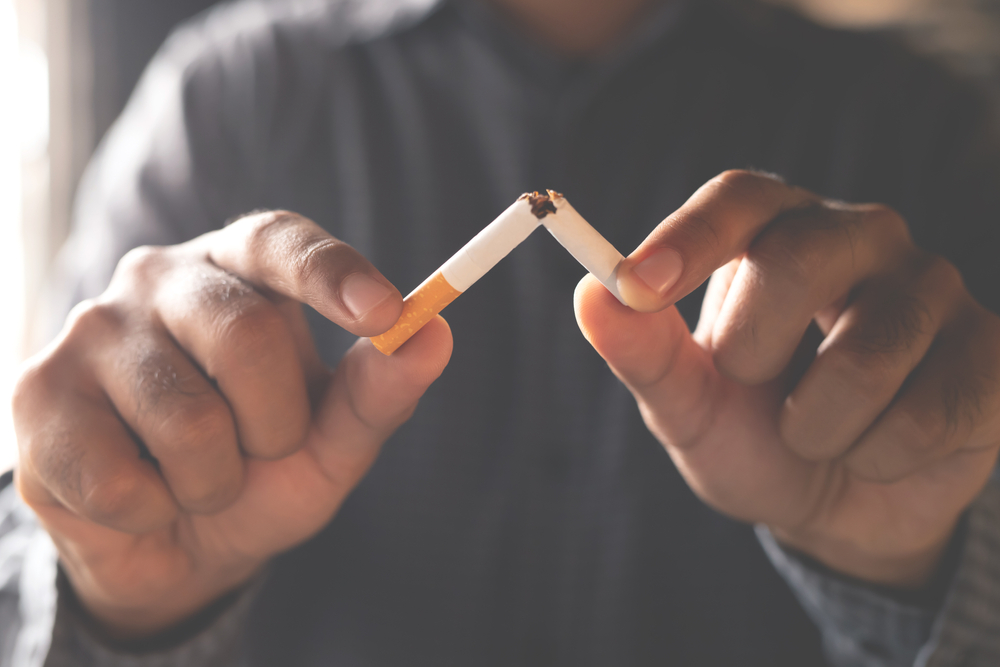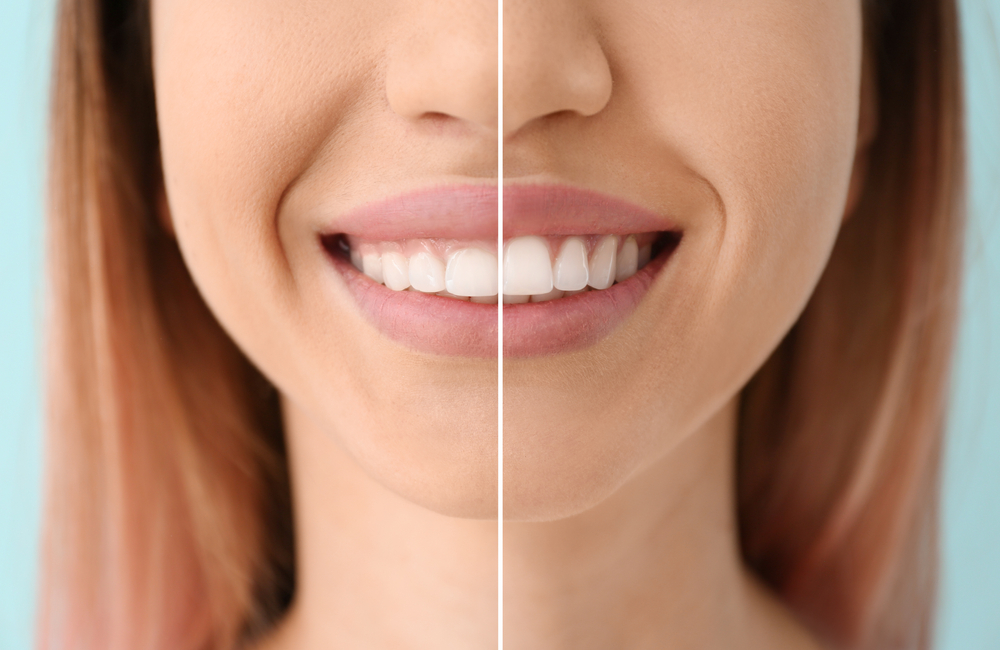The habit of smoking and using tobacco is more than just a lifestyle choice; it’s a significant risk factor for numerous health issues, including those affecting your mouth. From stained teeth and bad breath to serious gum disease and oral cancer, the impact of tobacco on your dental health is profound and far-reaching. Despite the well-documented risks, many people remain unaware of the specific ways smoking and tobacco use can damage their teeth and gums. This blog aims to shed light on these effects, emphasizing why quitting tobacco is one of the best decisions you can make for your oral health.
In This Blog:
- Understanding Tobacco Products & Use
- Short and Long-Term Effects of Tobacco on Oral Health
- The Relationship Between Tobacco and Oral Cancer
Understanding Tobacco Products & Use
Tobacco use comes in various forms, each carrying its own set of health risks, particularly for oral health. Understanding these different products and their prevalence can help provide context for their impact on dental health.
Cigarettes
Cigarettes are the most common form of tobacco use. They consist of finely cut tobacco leaves wrapped in paper and often include additives to enhance flavor and nicotine delivery. When smoked, cigarettes release thousands of harmful chemicals, including tar, nicotine, and carbon monoxide. The ease of use and widespread availability make cigarettes a prevalent choice, but they are also highly addictive and damaging to oral health.
Cigars and Pipes
Cigars and pipes are similar to cigarettes in that they involve the combustion of tobacco, which releases toxic substances. Cigars typically contain more tobacco than cigarettes, and the smoke is often not inhaled as deeply, but the exposure to harmful chemicals is still significant. Pipe tobacco is smoked through a pipe, and like cigars, it involves less deep inhalation but still poses a high risk for oral health issues.
Smokeless Tobacco
Smokeless tobacco products include chewing tobacco and snuff. Users place these products in their mouth, where the tobacco is absorbed through the mucous membranes. While smokeless tobacco does not involve combustion, it still delivers high levels of nicotine and other harmful substances directly to the oral tissues. This type of tobacco use is associated with an increased risk of gum disease, tooth decay, and oral cancers.
E-cigarettes and Vaping
E-cigarettes and vaping devices heat a liquid containing nicotine, producing an aerosol that users inhale. These products are often marketed as a safer alternative to traditional smoking, but they still expose users to nicotine and other potentially harmful chemicals. The long-term effects of e-cigarettes on oral health are still being studied, but early evidence suggests they can contribute to gum inflammation and other oral health issues.
Hookah (Water Pipe)
Hookah, or water pipe smoking, involves inhaling flavored tobacco smoke that passes through water before reaching the user. Despite the belief that hookah is safer due to the water filtration, it still exposes users to significant levels of nicotine, tar, and other toxic substances. The social nature of hookah smoking can also lead to prolonged exposure, increasing the risk of oral health problems.
Understanding the different types of tobacco products and their specific risks is crucial for recognizing the broad impact of tobacco use on oral health. Each form of tobacco use poses unique challenges, but all contribute to significant dental issues that can be prevented by quitting tobacco.
Short and Long-Term Effects of Tobacco on Oral Health
Tobacco use has both immediate and long-term effects on oral health. These effects are sometimes known as “smoker’s mouth”. Understanding these impacts can underscore the importance of quitting tobacco and maintaining good oral hygiene practices.
Short-Term Effects of Tobacco on Oral Health
Staining and Discoloration of Teeth
One of the most immediate and noticeable effects of smoking and tobacco use is the staining and discoloration of teeth. Tobacco contains tar and nicotine, which can cause teeth to turn yellow within a short period. Long-term users often develop deep, brownish stains that are difficult to remove with regular brushing, affecting the appearance of their smile.
Bad Breath (Halitosis)
Tobacco use leads to persistent bad breath, known as halitosis. The chemicals in tobacco smoke linger in the mouth and lungs, creating a strong, unpleasant odor. Additionally, smoking reduces saliva production, which helps cleanse the mouth and neutralize odors. The dry mouth environment allows bacteria to thrive, further contributing to bad breath.
Reduced Sense of Taste and Smell
Tobacco smoke dulls the senses, particularly taste and smell. The chemicals in tobacco can damage taste buds and olfactory receptors, making it harder to enjoy the flavors and aromas of food and drink. This reduction in sensory perception can diminish the overall quality of life and may lead to nutritional deficiencies if the smoker loses interest in eating a balanced diet.
Increased Risk of Gum Infections
Smokers are more susceptible to bacterial infections in the mouth. The harmful substances in tobacco impair the immune response and blood flow to the gums, making it easier for bacteria to establish infections. This can lead to early signs of gum disease, such as redness, swelling, and bleeding.
Long-Term Effects of Tobacco on Oral Health
Periodontal Disease
Long-term tobacco use significantly increases the risk of periodontal disease, including gingivitis and periodontitis. The chemicals in tobacco reduce blood flow to the gums, impairing their ability to heal and fight off infections. Smokers often experience more severe and rapidly progressing gum disease, leading to gum recession, bone loss, and tooth loss if not properly managed.
Tooth Decay and Cavities
The dry mouth environment created by tobacco use, combined with increased plaque buildup, leads to a higher risk of tooth decay and cavities. The lack of saliva allows acids produced by bacteria to erode tooth enamel more easily, resulting in frequent dental decay and the need for restorative treatments.
Tooth Loss
Chronic gum disease and tooth decay in smokers often result in tooth loss. The supporting structures of the teeth, including the gums and jawbone, become damaged and weakened, making it difficult to retain teeth. This can lead to significant functional and aesthetic challenges, requiring extensive dental interventions such as dentures or implants.
Oral Cancer
One of the most severe long-term effects of tobacco use is the increased risk of oral cancer. Both smoking and smokeless tobacco products contain carcinogenic substances that can cause mutations in the cells of the mouth, leading to cancer. Smokers are significantly more likely to develop oral cancer than non-smokers, and the risk increases with the duration and frequency of tobacco use.
Complications in Dental Treatments
Tobacco use can complicate and reduce the success rates of various dental treatments. Smokers experience delayed healing after dental procedures, higher rates of infections, and reduced effectiveness of periodontal treatments. Dental implants, in particular, are less likely to be successful due to impaired bone healing and integration.
Overall Aesthetic and Functional Impacts
Long-term tobacco use not only affects the health of the mouth but also its appearance and function. Stained teeth, gum recession, tooth loss, and persistent bad breath can significantly impact self-esteem and social interactions. Additionally, the structural damage caused by tobacco use can make eating, speaking, and maintaining oral hygiene more difficult.
Recognizing the short and long-term effects of tobacco on oral health highlights the importance of quitting smoking and using tobacco products. By doing so, individuals can prevent or mitigate these harmful impacts, leading to better oral and overall health.
The Relationship Between Tobacco and Oral Cancer
Tobacco use is one of the most significant risk factors for developing oral cancer. The relationship between tobacco and oral cancer is well-documented, with both smoking and smokeless tobacco products contributing to a high incidence of this life-threatening disease.
How Tobacco Causes Oral Cancer
Carcinogenic Compounds in Tobacco
Tobacco products contain a multitude of carcinogenic substances. When tobacco is burned, as in cigarettes and cigars, it releases thousands of chemicals, many of which are known carcinogens. Even smokeless tobacco products, such as chewing tobacco and snuff, contain harmful substances that can lead to cancer. These carcinogens cause mutations in the DNA of cells in the mouth, leading to uncontrolled cell growth and cancer development.
Direct Contact with Oral Tissues
Smokeless tobacco products are particularly harmful because they are in direct contact with the oral tissues for extended periods. This prolonged exposure increases the risk of cellular mutations in the mouth, gums, cheeks, and throat. The risk is compounded by the presence of irritants in tobacco that cause chronic inflammation, creating an environment conducive to cancer development.
Systemic Effects of Smoking
While the local effects of tobacco on the mouth are significant, smoking also has systemic effects that contribute to oral cancer. The harmful chemicals in tobacco smoke are absorbed into the bloodstream and can affect tissues throughout the body, including the oral cavity. This widespread exposure increases the risk of cancer not only in the lungs but also in the mouth and throat.
Statistics on Oral Cancer and Tobacco Use
Increased Risk for Smokers
Smokers are significantly more likely to develop oral cancer than non-smokers. Studies have shown that smokers are six times more likely to develop oral cancer. The risk increases with the number of cigarettes smoked per day and the duration of the smoking habit. Even former smokers remain at a higher risk compared to those who never smoked, although the risk decreases over time after quitting.
Impact of Smokeless Tobacco
Users of smokeless tobacco products also face a high risk of oral cancer. The risk is particularly pronounced for cancers of the gums, cheeks, and inner lining of the lips, where the tobacco is placed. Research indicates that long-term use of smokeless tobacco products can lead to a 50 times greater risk of developing cancers of the cheek, gums, and inner surface of the lips.
Signs and Symptoms of Oral Cancer
Early detection of oral cancer significantly improves the chances of successful treatment. However, many people are not aware of the symptoms and may not seek medical attention until the disease has progressed. Common signs and symptoms of oral cancer include:
- Persistent sores or ulcers in the mouth that do not heal
- Red or white patches on the gums, tongue, or lining of the mouth
- Unexplained bleeding in the mouth
- Lumps or thickening in the cheek or other areas of the mouth
- Difficulty chewing, swallowing, or moving the jaw or tongue
- Numbness or pain in the mouth or lips
- Changes in the way your teeth fit together when you close your mouth
If any of these symptoms persist for more than two weeks, it is essential to see a healthcare professional for a thorough examination.
Importance of Early Detection and Regular Check-ups
Regular Dental Visits
Regular dental check-ups are crucial for the early detection of oral cancer. Dentists are trained to spot early signs of oral cancer during routine examinations. They can identify suspicious areas and recommend further testing if necessary. For tobacco users, these check-ups are particularly important, as they are at a higher risk of developing oral cancer.
Oral Cancer Screenings
During a dental visit, a dentist can perform an oral cancer screening, which involves a visual inspection of the mouth and palpation of the neck and jaw for any abnormalities. Early detection through these screenings can lead to prompt treatment and significantly better outcomes.
Reducing the Risk of Oral Cancer
Quitting Tobacco
The most effective way to reduce the risk of oral cancer is to quit using tobacco products. Quitting smoking and other forms of tobacco use can significantly lower the risk of developing oral cancer, even if you have been a long-term user. The risk of oral cancer decreases over time after quitting, emphasizing the importance of taking action as soon as possible.
Healthy Lifestyle Choices
In addition to quitting tobacco, maintaining good oral hygiene, eating a balanced diet rich in fruits and vegetables, and limiting alcohol consumption can further reduce the risk of oral cancer. These healthy lifestyle choices support overall oral health and can help prevent the development of cancer.
The relationship between tobacco use and oral cancer underscores the critical need for awareness and preventive measures. By quitting tobacco and staying vigilant about oral health, individuals can significantly reduce their risk of oral cancer and improve their overall health and well-being.
Conclusion
The harmful effects of smoking and tobacco use on your oral health are extensive, affecting everything from the appearance of your smile to the health of your gums and the success of dental treatments. Immediate impacts like stained teeth and bad breath can give way to severe long-term consequences, including periodontal disease, tooth loss, and oral cancer. However, the benefits of quitting smoking are profound and far-reaching. By quitting, you can improve your gum health, enhance the success of dental procedures, reduce the risk of oral cancer, and enjoy a brighter, healthier smile. Taking steps to quit smoking, supported by dental professionals and available resources, is a crucial investment in your overall health and well-being. Remember, it’s never too late to quit and start reaping the rewards of a tobacco-free life.







